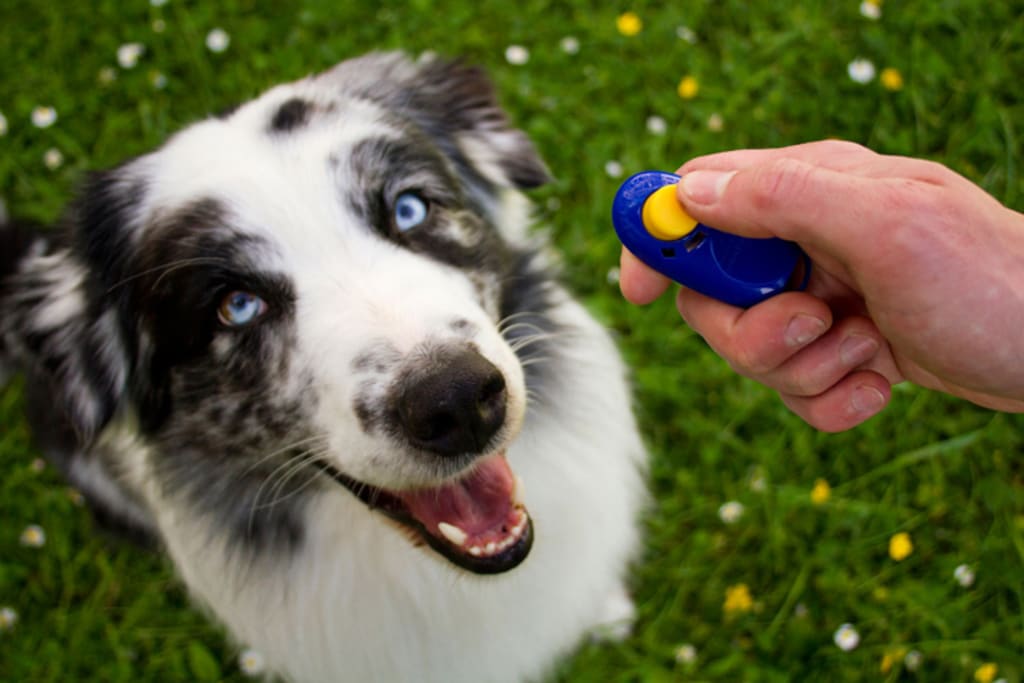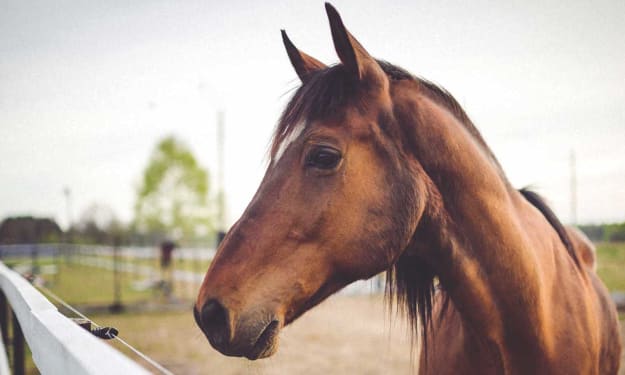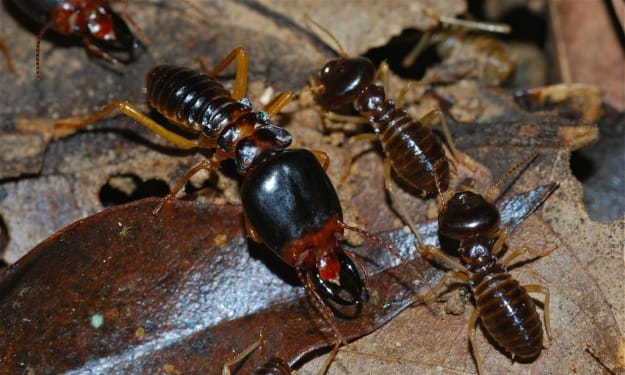Top 5 Clicker Training Mistakes...
And How To Avoid Them

Clicker training is a common way of training an animal using positive reinforcement. It is an effective method of training which involves the use of a small device that clicks, a reward, and a patient handler. The basic principle is rewarding the animal for performing the desired behaviour and ignoring it when it does not perform the desired behaviour. The clicker is employed as soon as the target behaviour is performed and used as a bridge, in order for the animal to create an association between the food and the reward. The method is commonly used to train dogs, but can also be effectively used to train any animal (even a goldfish), so long as the trainer works within the species' natural limits.
Sounds simple enough, doesn't it? However, many people run into difficulty when clicker training by making at least one of these mistakes. I'm here to help you identify where you are going wrong and how to fix it! So without further ado...
1) Poor Timing
The most important aspect of clicker training is timing. The click must mark the behaviour as clearly as possible. Some behaviours that you're trying to mark are fleeting. If you click too early or too late you'll miss it. Before you know it, your pet will be offering all of the wrong behaviours trying to get that reward. You have to be precise and consistent with your timing, otherwise your pet will get confused. It's hard to be on the receiving end of clicker training. You can experience this in a brief two-person exercise, where one attempts to "train" the other to do a simple task (e.g. touch their nose) using only clicks to shape their partner's behaviour. What you're asking may seem simple or obvious, but to your oblivious pet, it's a guessing game, easily muddled by poorly timed clicks.
2) Not Creating a Shaping Plan
Before you even touch a clicker, you must have a plan for what you want to accomplish. This may be something simple, but to your pet who doesn't know what you're asking, it is not. You must break down the behaviour into gradual steps that are easy to accomplish. Maybe you want to train a horse not to freak out when you attempt to worm it or drench it with antibiotics. You can't rush in there with a £20 tube of wormer to waste and a clicker and expect it to go well. It's going to be blood, sweat, and tears (as well as a waste of £20). First, figure out what aspect of the process is stressing out the horse. Is it head/mouth shy? Take steps to get it used to restraint with a headcollar, and direct contact with the mouth using just your hand — wormer free. Is it the anticipation of the bad taste? Try conditioning your horse to remain calm using an empty tube of wormer. Use the clicker to build the association between the drench and a nice tasting treat instead of horrible wormer. Next, try filling the drench with something that tastes nice, like apple puree. This means the horse will get used to being drenched with a liquid and not be startled by the real thing. Then try to teach the horse that its head must remain high, using delayed gratification (so that it will not instantly lower its head and spit out the wormer). If your horse still panics at the smell of the wormer, you could try using a small amount of ginger/mint scented oil on its nose. There are many ways to break down even a simple task into many smaller, easier to accomplish steps. If you master these steps one at a time and employ self-control not to rush through them, then you will establish a really solid foundation to build upon. Yes, this can take time, so have this prepared and give yourself plenty of time to master it before the big day (they need to be wormed in February, start in January). It also helps to write down your shaping plan and stick to it. It may seem simple and you may think you can remember it, but in reality, you will be tempted to skip five steps at once as soon as things are looking good and push your animal too far too quickly. Take your time and relax and I guarantee you'll both be much happier.
3) Forcing the Behaviour
You should never try to force the animal to do something outside of its limits. Even tricks and unnatural behaviours should be within the animal's ability. Many of these are built upon natural behaviours and are novel due to circumstances. Therefore, you shouldn't force your animal into doing what you want them to do and then reward them for it. You must wait until they offer the behaviour of their own free will and then reward it. If it receives a reward it will likely repeat the behaviour, but you still need to wait until it offers that behaviour again, even if you are waiting a while. The animal will try a lot of things you don't want in an attempt to be rewarded, so if you want them to get it, make sure you only reward the precise, desired behaviour, and make sure to click as soon as it is offered.
4) Over-Treating
Overtreating can create more problems than it solves. It can be bad for dental health if they are consuming too much sugar. It can also create behavioural problems such as nipping, anticipatory behaviours, and being pushy or rude. This is why you should conceal your treats in a small bag (fanny-packs are perfect, though admittedly dorky), and pause between the click and reaching for the reward. When you are further along your shaping plan, you can also delay treating and deliver a second click when the animal has held the pose for several seconds, so that it learns that it does not get a treat for every single click. Do not keep treats in the pocket of the jacket or item of clothing you often wear, or you will be nagged for a treat when you are not even clicker training. You must have a separate way of treating during clicker training compared to everyday life. You may also consider using another kind of reward instead of a treat/food reward. A nice scratch or a pat may be enough motivation for some. In dogs, even eye contact can be a reward as they feel joy from this kind of social interaction with humans they admire. With a nervous equine, the reward may simply be backing off and leaving it alone a few seconds before approaching again. Think about what is suitable for your pet and the situation before going straight to treating.
5) Doing It at Random Times
What I mean by this is, don't walk about with a clicker in your pocket at all times and randomly reward any desired behaviour. This will turn your animal into a treat monster that is constantly offering weird behaviours and expecting to be rewarded at awkward times. Nor should you attempt to clicker train two or more completely unconnected behaviours at the same time. Pick one to focus on and only move on to other things once you have mastered that. Set aside 5-15 minute blocks of time to dedicate to clicker training. This shouldn't be stressful, it should be fun and mentally stimulate the animal, so a half an hour session is going to be too long. Make sure you are sticking to your shaping plan and not rushing or skipping steps. You should also choose your location carefully. There should be minimal distractions and there shouldn't be a lot of other animals and people around confusing things. This is a one-on-one activity for you and your pet (unless you have an expert or coach there to provide guidance).
Now, I don't mean to sound like a nag. Take it from me, as someone who has eagerly rushed in with the best of intentions and made these mistakes before, it's worth taking your time and being careful. In the wrong hands, clicker training can cause all sorts of behavioural problems. It really helps to educate yourself, plan ahead, and be aware of the common mistakes before you jump into it. Animal training should never be done in a hurry and always be done with the animal's welfare in mind. Try to have fun with it and see it as an opportunity to bond with your pet. If you view training as a battle to be won, you've already lost.
There are many helpful books out there if you'd like more information. For guidance in clicker training for equines specifically, I'd recommend The Art and Science of Clicker Training for Horses by Ben Hart.
About the Creator
Corinne McCafferty
By day I work with vulnerable equines.
By night I write.
It's a wonderful life.






Comments
There are no comments for this story
Be the first to respond and start the conversation.